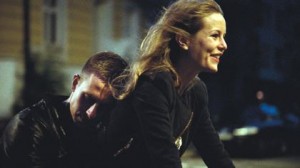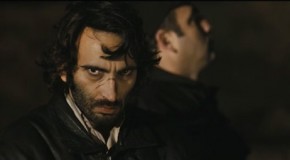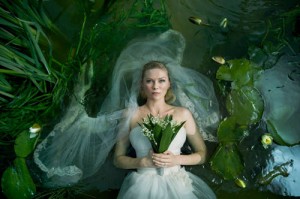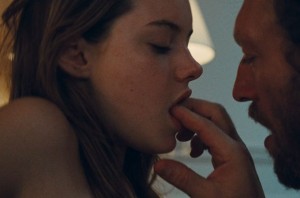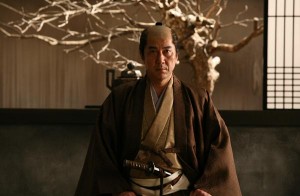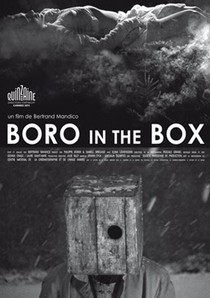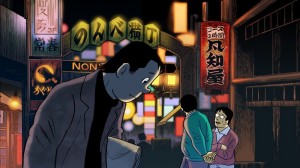FNC ROUNDUP – Festival du Nouveau Cinéma 2011
FNC ROUNDUP – Festival du Nouveau Cinéma 2011
By Ariel Esteban Cayer, Kier-La Janisse, David Bertrand and Adam Abouaccar
The Festival du Nouveau Cinéma (FNC for short) celebrated its 40th anniversary this year and with it came an onslaught of anticipated films from around the world, as well as unexpected oddities and mind-blowing discoveries. Spectacular Optical offers an overview of (some of) this edition’s most memorable films. On the menu, new work by the likes of Sono, Wenders, Von Trier, viagra canada generic Almodovar, Miike & more!
Guilty of Romance (dir. Sion Sono)
The edited version of Sion Sono’s Guilty of Romance that played at FNC this cialis online in usa year as part of the Temps Zero programming was simply fantastic. Not dissimilar in many ways to Jean Luc Godard’s Vivre sa vie, Guilty of Romance stars the outrageously beautiful Megumi Kagurazaka as Izumi, a sexually starved housewife to a famous writer who’s never home. A chance encounter with a talent scout who expresses interest in her looks leads Izumi astray along a path of sexual experimentation and hyper-stylized violence. The film is divided into chapters, moving pharmacy selling viagra in israel forward and backward though time as we also follow two detectives in their investigation of a case involving mutilated female remains in a seedy love hotel. What’s troubling about a lot of the film is trying to figure out how to feel about what’s being shown as Guilty of Romance, even at its lowest and most disturbing moments is incredibly sexy. Wonderful and surreal work which in a way defends a woman whose only crime is experiencing passion for the first time and sets new standards for the amount of CGI paint in movies. (AA)
Oslo, August 31st (dir. Joachim Trier)
Quite similar to the excellent Reprise (2006), Trier’s debut film which explored Norway’s expanding youth culture within the context of two writers’ (and best friends) rivalry, Oslo, August 31st examines twenty-four hours in the life of a seemingly level-headed recovering drug addict, 24 hours in Oslo which he’ll use to wander around, reflect, meet ex-girlfriends, long-time friends and acquaintances, have fun and slip into old habits. Beautiful, purposefully loose and insidiously devastating, Oslo, August 31st is the second – and better offering – from a contemporary director deserving to be discovered by more viewers and whose work is almost unsettling in its immediacy and accurate – one can only assume – portrayal of Norway’s current young adults. (AEC)
Pina (dir. Wim Wenders)
Contemporary dance is somewhat of an acquired taste and while Pina is definitely a film for a specific audience, one can safely say Wim Wenders’ latest film is one of the definitive works done about the art form, in any medium A love letter to the late Pina Bausch, which cinephiles might know from her appearance in Almodóvar’s Hable con ella, Wenders (who attended the screening and gave an incredibly heartfelt introductory speech which placed the film back into the context of Pina’s passing) transforms what was initially going to be a documentary about Pina into a celebration of her legacy, work and craft. Constructed around extended sequences of gorgeous 3D(!) choreographies, Pina is one of the rare films to fully understand 3D and successfully use it as an enhancer of depth-of-field, which becomes an essential component of a film made mostly of static balcony shots looking down on a stage. A visual tour-de-force, extremely impressive and offering a great introduction to Pina Bausch’s work, Pina, in its unconventional structure pace and specific subject matter, has a very little audience outside of modern dance enthusiast and Wenders completionists, but most should be, and rightfully so, delighted by this impressive visual homage. (AEC)
Shame (dir. Steve McQueen)
Acclaimed British visual artist Steve McQueen (not to be confused with that Steve McQueen) did not make his first steps into the film world unnoticed. Indeed, Hunger, a stunning account of the Irish Hunger Strike of 1981, in which Michael Fassbender’s star-making performance confronted us with the mental and bodily repercussions of corrupt politics, was rightfully hailed as one of the greatest debut films of all time and best films of 2008. It came as no surprise that McQueen was going to team up with Fassbender again (with which he is evidently building a Scorsese-De Niro relationship) for Shame, his exploration of urban alienation through the lens of an excruciating sex addiction. Incredibly precise in its composition, performances and script, Hunger is the gut-wrenching portrait of Brandon, through which McQueen exhibits his rare talent as a director and Fassbender confirms, yet again, he is one of the great actors of our time. Careful framing and impeccable sound design sustain tension out of thin air as McQueen takes us through a man’s self-destructive sexuality and his single relationship with his sister (interpreted brilliantly by Carey Mulligan) – a dynamic which escalates into a grandiose and spellbinding tragedy one can simply not look away from. Furthermore, McQueen’s unshakable aesthetic– rivalled this year perhaps only by Refn’s stellar Drive – makes it one of the most pleasing visual experiences of the year, in which the architecture and colours of the city have a voice of their own, yet merely amplify the human story McQueen and Fassbender decorticate with impeccable minutiae. Fascinating, beautiful and devastating, Shame is simply one of the best films of the year. (AEC)
The Turin Horse (dir. Béla Tarr)
Béla Tarr’s The Turin Horse, picking up immediately after the events that led Friedrich Nietzsche to spend his final ten years in complete silence, follows a man, his daughter and their horse for six days as they try to maintain their modest routine in spite of a powerful wind they suspect will bring an end to everything. Showcasing Tarr’s signature long takes and tracking shots as well as clocking in at just fifteen minutes short of three hours, the film, in truth, flies by and remains hypnotic throughout. It also features one of the more badass speeches delivered in recent memory midway through its running time – by a nameless stranger who wanders into the family’s home in search of some pálinka. Tarr conjures otherworldly performances from everyone involved, Janos Derzsi’s mug in particular, acting as an asset that helps in providing some of the film’s most memorable images. It’s apparent that all aspects of the film have been handled meticulously and if you can, the film deserves to be seen and properly projected on the big screen. (AA)
Once Upon A Time in Anatolia (dir. Nuri Bilge Ceylan)
Nuri Bilge Ceylan’s latest film is an incredible recounting of a group of men who set out to investigate the whereabouts of a dead body somewhere in the Anatolian steppe. Essentially a road picture, Once Upon a Time in Anatolia drags us by the arm from one location to the seemingly identical next as Suspect Kenan tries to remember where he and his brother buried a man they’ve confessed to killing, a labor that proves very difficult as Kenan had apparently been drinking heavily the night it happened. Along the way, the officers and doctor assigned to the case get to know each other quite well through conversations on a whole slew of different matters including food, suicide, prostates and guilt. Visually, the film is stunning and the story is really something, but what has to be said about the piece however is that it almost happens in real time, showing us absolutely everything that goes into a criminal investigation, regardless of the viewer’s inclination or desire to see it all. (AA)
Take Shelter (dir. Jeff Nichols)
Currently ubiquitous actor Michael Shannon’s performance as construction worker Curtis in Take Shelter is controlled and downright terrifying. Jeff Nichols second feature captures the zeitgeist of today’s Middle America very effectively, through the story of a man who begins having visions of an approaching storm that threatens to destroy everything. Convinced there might be something to these visions, Curtis wastes no time pouring money he does not have into building a bomb shelter to protect him, his wife (the gorgeous Jessica Chastain,) and their hearing-impaired daughter, despite the fact that they don’t seem to want the protection. Throughout the course of the shelter’s construction, Curtis systematically alienates himself from his community to a point where the support is so lacking that he believes he might be schizophrenic. This is certainly not the thriller the trailer might persuade you to believe it is, and the question as to whether Curtis is crazy or not sets us up for a resolution that the film simply cannot provide in a way that’s satisfying to the viewer. This is perhaps beside the point though, as between the beginning and end, the film depicts the very real portrait of an America that’s both frustrating and terribly engaging. (AA)
Sleeping Beauty (dir. Julia Leigh)
Between Animal Kingdom and Snowtown (reviewed below), Australia’s recent cinematic output has been hard-hitting to say the least, and Sleeping Beauty, novelist Julia Leigh’s directorial debut starring Emily Browning (of Sucker Punch, recently), is no exception. In telling the story of Lucy – a smart, independent, yet emotionally disturbed and complexly characterized young girl, who, while balancing personal life and multiple part-time jobs indiscriminately, is drawn into the world of high-end prostitution and Eyes Wide Shut-type sexual fantasies – Sleeping Beauty is as divisive as it is dense, confronting and even confusing in its possible feminist agenda. The film’s first scene had me shivering with discomfort and from there on, with its rigorously fixed mise-en-scène, elliptical structure and minimal style as well as cryptic dialogue and unshakable unease, Sleeping Beauty, under Leigh’s thoughtful direction, ultimately builds towards an uncanny character study, which unfolds meticulously and culminates in a disturbing third act – and a final scene which will certainly leave you thinking and scrutinizing. Overall, though, the film is carried mainly by Browning’s extremely brave performance, which she tackles with such admirable confidence and grace. Not for everyone, Sleeping Beauty is a mesmerizing film, from an author-turned-director one will definitely have to keep an eye out for. (AEC)
Melancholia (dir. Lars Von Trier)
This movie is bleak. Lars Von Trier’s newest film brings together one of the best casts of the year and places its characters into a diptych of a catastrophic wedding celebration and the end of the world as a giant planet threatens to collide with Earth. Despite a lack of subtlety and an ending that takes a rather long time to get to where it’s going, Melancholia is gorgeous. The film opens with a series of hyper-real tableaux that play out partially like fashion advertisements, in a sequence that is wholly pretentious and thoroughly awesome. What follows is a very cold and sociopathic exercise in putting the characters through personal hells in order to provoke some sort of reaction from the viewer. The whole is very funny, though, featuring performances by John Hurt, Udo Kier and Alexander Skarsgård that immediately propel a need to see more of their characters whenever they’re not on screen. They soon leave us though, as the second half of the film is largely a two-hander between Charlotte Gainsbourg and Kirsten Dunst, who do a fine job of selling the imminent apocalypse. (AA)
La Piel Que Habito / The Skin I Live In (dir. Pedro Almodovar)
When news broke out that Almodovar was working on a horror film, people got excited and rightfully so. An adaptation of Thierry Jonquet’s novel Mygale (Tarantula), La Piel Que Habito aka The Skin I Live In reunites the iconic Spanish filmmaker with long time collaborators Antonio Banderas and Elena Anaya. All of Almodovar’s visual flair collides here with hints of Cronenberg and a handful of Franju (Les yeux sans visages, Judex, Nuits Rouges) for a spine-tingling tale of dermatological obsession, revenge and twisted romance. Incredible story structured in a mind-blowingly effective way, the film’s multiple twists and turns will keep you riveted to the screen, until the pivotal reveal, which will have insidiously crept under your skin fairly early on in all its delightful perversity, inevitably hits you in the face. Solving – or perhaps complicating – the eternal conundrum raised by the rape-revenge subgenre concerning the appropriate ratio between rape and punishment, as well as their respective severity and allotted screen time, La Piel Que Habito is an unexpected gem for genre enthusiasts – a medical horror thriller, which in the hands of today’s greatest filmmakers, builds on most excellent films to become its own work of lurid fiction. (AEC)
Notre Jour Viendra (dir. Romain Gavras)
Despite what the trailer might want you to believe, Romain Gavras’ feature film debut is a perfectly idiosyncratic buddy comedy(!), if Napoleon Dynamite somehow had the grittiness of La Haine, by ways of the odd films his fellows of the French electro scene have been producing in the past few years – Daft Punk’s Electroma, Quentin Dupieux’s Steak, Rubber or Justice’s road movie A Cross the Universe, which Gavras co-directed, come to mind. Mostly known for his music videos (M.I.A.’s “Born Free”, spiritual sequel to this film, Justice’s controversial “Stress”, The Last Shadow Puppet’s “The Age of the Understatement”, etc.), Gavras (son of Costa) crafts here a delirious story of chaos and destruction, as two redheads (Cassel and Barthelemy – perhaps the French Jesse Eisenberg), who’ve had enough of the persecution(?) perpetrated against their “race”(??), decide to drop out of society, hit the road to find the redhead promised land (Ireland) and ultimately get into a heap trouble when they decide to get homicidal. Following very little plot and carried by its visual and performances alone, Notre jour viendra is a fun in-and-out, which is perhaps offensively stereotypically French in its use of racial stereotypes, but mostly worth your time if you can appreciate a thin and bizarre film about the search of identity – that might very well be about nothing all. (AEC)
Snowtown (dir. Justin Kurzel)
This debut from music video and short film director Justin Kurzel tackles the infamous Snowtown murders that took place in Snowtown, South Australia between 1992 and 1999. Uncompromising and somewhat hermetic, Snowtown succeeds in its brutal atmosphere, chaotic and uneasy structure and great performances, as one witnesses Jamie and his younger brother Alex become closer and closer to John Bunting (a chilling Daniel Henshall), who acts as a father figure, mentor to the teens and eventually turns their existence into a succession of homicidal outbursts. Desolate landscape and truly deranged family dynamics that wouldn’t feel misplaced in a Texas Chain Saw Massacre as seen through the eyes of Harmony Korine add to the overall crushingly bleak tone of the film and Snowtown manages to be quite unique in its thoroughly depressing depiction of barren suburban life as interrupted by unspeakable acts of unexplainable violence. The thick Australian accents mixed with dialogue-heavy scenes between the characters may lead to some audience comprehension issues, but considering Snowtown is already quite dense to begin with, that shall only be an excuse to see it again. (AEC)
Saya Zamurai (dir. Hitoshi Matsumoto)
Affirming himself as a truly unique filmmaker with the kaiju mockumentary Dai Nipponjin (2007) and a master of high concept comedy with Symbol, easily one the best films of 2009, comedian/director Hitoshi Matsumoto elevates his peculiar craft to an entirely different level with this jidaigeki comedy that had me crying and gasping of laughter. Like his two previous films, Saya Zamurai (aka Scabbard Samurai) is a high-concept comedy relying on repetition of a very simple and clever idea. When an aging swordless ronin (Takaaki Nori, hilarious) and his young daughter (Sea Kumada) are captured by a feodal lord, they are given 30 days to make his son laugh, who has lost his smile with the passing of his mother. 30 days, one attempt per day – that’s it. And because Matsumoto’s mastery of comedic timing and imagination knows no bounds, hilarity ensues. But in the process, Saya Zamurai manages to become much more than a relentless series of genius gags: a film about the intricacies of creative process behind filmmaking and comedy; a film about the absurdity of bushido, mortality and life itself; a film experience unlike any you’re going to have this year. Matsumoto elevates comedy to such degrees it becomes humanistic. Saya Zamurai will illuminate your day, have you marvel at the sheer ingenuity of its cinematic devices and, most importantly, take you through a spectrum of emotions that will have you wiping tears off your face. (AEC)
Shirome (dir. Koji Shiraishi)
This J-Horror and mockumentary mix from the director of Noroi: The Curse (2005) is less of a film and more of a document, not exactly successful as a feature but infinitely interesting in how in unashamedly warps filmmaking ethics in order to exist. When Koji Shiraishi, who apparently hates J-POP, decided to make a narrative found-footage film about a J-POP band visiting a haunted house, he tricked the real members of the insufferable (and very real) teen idol pop band Momoiro Clover (aka Momoclo aka Momoiro Clover Z) into visiting a “haunted house” as part of a reality television show. Without telling the girls, of course – who were mostly, if not all underage – that he’s in fact using them as actresses in his fictional horror film and utilizing their genuine hysterical reactions as his film’s performances. Ingenious, yet villainous and morally dubious to put it mildly, the film plays out as a testament to these girls’ naiveté while perpetuating J-Horror’s fascination with new media, technology and video aesthetics. That said, Shirome offers little more than an interesting social experiment and proves to be a lukewarm entry in the flourishing found-footage/reality horror subgenre as well as the J-horror genre itself, which has offered better and scarier hauntings to chew on – teenage girls hysterics or not. (AEC)
End of the Night (dir. Daisuke Miyazaki)
After working as a second unit director on Kiyoshi Kurosawa’s Tokyo Sonata, Daisuke Miyazaki offers his directorial debut, an attempt at creating, in his own words, Japan’s own “J-Noir”. While one could argue Nikkatsu firmly created Japan’s own Noir genre, Miyazaki crafts a solid debut film, despite a narrative built on decidedly familiar grounds: Akira (a very convincing Kuniaki Nakamura) was an infant when his parents were murdered by Tamegoro, the hit man who adopted him and taught him his craft. 25 years later and knowing nothing else, Akira is a jaded assassin, top hit man of his father’s crew. Something that is likely to change as he meets a prostitute, which he thought his father had killed 10 years earlier. Familiar themes and motifs are exploited in mostly unremarkable ways but what makes End of the Night worth the look lies in Miyazaki’s audaciously detached style, playful use of light as shadow – an interesting aesthetic made possible by the film’s remarkable (and budgetary) use of prosumer HD technology – as well as a justified integration of modern day urban malaise within a decidedly Japanese neo-noir creation. (AEC)
Hara-kiri: Death of a Samurai (dir. Takashi Miike)
Takashi Miike’s latest jidaigeki revision (and companion piece, if you will, to the successful 13 Assassins; a bastardization of sorts of Kurosawa’s classic humanist text Seven Samurai, while managing nonetheless to be its own very good action-packed samurai epic, in a typically explosive Miike way) is a nearly exact remake of Masaki Kobayashi’s notorious anti-samurai classic Haraki (1962). Despite being useless in its 3D (which merely adds depth to the film’s very precise architectures) and sometimes baffling in its – mostly structural, but sometimes stylistic – liberties (the snow during the final duel, almost funny in its artificiality and rendering the scene unnecessarily muddied), Hara-kiri remains fateful to the original text, yet not nearly as striking as Kobayashi’s singular black & white masterpiece, which offers as vibrant opposition to the conventions of the samurai film of the 60s and a brilliant denunciation of the hypocrisy of the Bushido code and feudal system. Ebizô Ichikawa, while delivering the goods, can only pale in comparison of Tatsuya Nakadai in the main role and Miike’s adaption, as a whole taken out of the mythical period in Japanese cinema which spawned the original, does not achieve more than being a remake of an excellent film, successful in its own right but not a necessary revision by any means. One walks out of the screening as one walks out of most good contemporary remakes: with the contradictory feeling of satisfaction from having seen a variation on a known and beloved source, yet not being exactly sure why that was a necessary experience – unlike 13 Assassins, which was, at least, a thorough and somewhat eccentric re-imagining of a familiar narrative structure. (AEC)
3D Sex & Zen: Extreme Ecstasy (dir. Christopher Sun)
Every year comes a film that is so thoroughly incredible it defies criticism. And by that, I do not necessarily mean good. Extreme Ecstasy is the 4th in the Sex & Zen series and the first to be in 3D – causing a sensation in China upon its release, beating Avatar’s opening weekend and making nearly 5M$ and the box office during its run. Adapted from Li Yu’s 1657 erotic novel The Carnal Prayer Mat, Extreme Ecstasy starts off great, offering outrageous balls-to-the-walls softcore entertainment mixed with deliriously cringe-inducing over-the-top melodrama. Inventive 3D as well as all of porno’s cheap jokes can be found in this story of a precocious scholar in quest of absolute sexual prowess and all remains fairly harmless until the film takes a – not entirely unexpected – turn towards gratuitous violence and excruciating misogyny. Overlong, enjoyable, brutish, funny or sexy are all good words to describe this opus of the infamous series, because in fact, the appreciation one can have for 3D Sex & Zen is bound to work roughly like a lemniscate: an infinity symbol being an appropriate visualization of how this film oscillates from incredible fun to embarrassing disaster in manners of minutes. (AEC)
Book of Dead (dir. Victor Faccinto, 1978)
Playing as part of an experimental program curated by Academy archivist, preservationist and film blogger Mark Toscano (http://preservationinsanity.blogspot.com/), Victor Faccinto’s disturbing Book of Dead is one of many 16mm prints recently (and surprisingly) restored by the Academy of Motion Picture Arts and Sciences that screened as part of the FNC Lab – the festival’s annual experimental film and video section. Faccinto’s completely silent 15-minute film is composed of cut-out animation and found footage over which he draws on the frames to mutilate and vulgarize his celluloid victims. But initially a series of cheap laffs riffing on bad behaviour – two lovebirds smoke excessively, eventually enveloped in their own (in)toxic(ating) clouds, lolling septuegenarian tongues lap up the bosoms of buxom models, and horns, tails and other demonic accoutrements are slapped onto seaside vacationers, all thanks to Faccinto’s eagerly desecrating “magic” marker – the film takes a distinctly darker turn when real, graphic crime scene footage is brought into the mix. Suddenly Faccinto’s cutesy cartooning seems inappropriate and offensive – a discordant effect that I’m sure is deliberate. (KJ)
Maska (dir. Brothers Quay)
Some beauty just can’t be sustained for feature length, and the Brothers Quay in short bursts is where they work best (as evidenced by the painful pretentiousness of their live-action features The Piano Tuner of Earthquakes, 2005, and Institute Benjamenta, 2005). Their 2010 film Maska (“The Mask”) is based on the Stanislaw (Solaris) Lem novel of the same name, about a female android on an existential journey, and at 23 minutes it is able to straddle the line between narrative and abstraction in a way that never ceases to be captivating even for impatient audiences. With a doom-laden score by Polish avant garde/classical composer Krzysztof Penderecki – his few film scores include 1965 cult film The Saragossa Manuscript – and the Quay’s usual blend of claustrophobic lighting, exotic textiles and bizarre archaic contraptions, Maska is another triumph for the sombre siblings.(KJ)
Mourir aupres de toi (dir. Spike Jonze + Simon Cahn)
The problem that plagues animated film is that so much work goes into the animation that the story is often left ignored and threadbare. This is certainly the case with Spike Jonze and Simon Cahn’s 6-minute Mourir aupres de toi, a collaboration with Parisian handbag designer Olympia Le-Tan whose concept about classic book covers coming to life through felt animation is neutered by a nothing story – two book cover characters exchanging lustful glances try to converge and are waylaid by Moby Dick’s giant stomach – but live happily ever after in undead form while a dumb song about “jumpin’ and humpin”’ plays jauntily over the credits. An annoying waste of a novel visual concept. (KJ)
Tabula Rasa (dir. Matthew Rankin)
I’m a longtime fan of Matthew Rankin’s work (Hydro-Levesque, Cattle Call), and his latest surreal tragicomedy is set, as his films often are, in his hometown of Winnipeg – this time during the epic Red River flood of 1950 (which saw 100,000 people evacuated and four of the city’s bridges destroyed). Rankin has a flair for visual ingenuity that stems from his start in an isolated community that likes very much to do everything on the cheap. As such, the Winnipeg ‘aesthetic’ is often informed by its own bargain-hunting and insistence on doing everything by hand. We see this in much Winnipeg output – ramshackle sets, DIY props and hand-processed film, an obsession with early cinema techniques – but the strange thing about Tabula Rasa is that it’s the one film Rankin has made outside of Winnipeg – and it shows. Despite its setting and sentiment, there is not a hint of Winnipeg in this film. This is not only on account of the Quebec-based cast and crew, but in its aesthetic, which has the moneyed and –sadly – homogenized look of contemporary Franco-Canadian cinema, as compared to the whimsical patchwork qualities of his earlier work in which you could literally see pieces of Winnipeg culture put into the pot like flavourful ingredients. Rankin left Winnipeg physically a few years ago, and this film shows his signs of leaving it spiritually as well. This gives the film’s title a strange sense of irony; it will be exciting to see where he goes from here. (KJ)
Boro in the Box (dir. Bertrand Mandico)
The best surprise of the festival for me. Having earmarked the “Magic” short film program purely to see the latest from Matthew Rankin, I didn’t even look at what else was playing in the block before attending – imagine my astonishment when the program closed with a 40-minute fantastical black and white bio-pic of Polish cult filmmaker Walerian Borowczyk, starring 90s indie it-girl Elina Lowensohn (of Michael Almereyda’s Another Girl Another Planet and Nadja and Hal Hal Hartley’s Simple Men) as Borowzyk’s horse-loving mother?! It was stunning to look at, and displayed both the eroticism and playfulness of Borowczyk’s own films. Borowczyk was once an important, boundary-breaking European art filmmaker often mentioned in the same breath as European auteurs like Jean Rollin, Fernando Arrabal, Alain Robbe-Grillet, Jess Franco and Jose Benzeraf. One of those directors the arthouse crowd and the exploitation crowd embraced equally. But time has forgotten Borowczyk (a fact that is addressed in the film), making Boro in the Box not only a lovely film that carries on a distinct visual tradition, but also an overdue reminder of one of the great talents of 70s cinema.
Tatsumi (dir.Eric Khoo)
A bizarre international production triangle if ever there was one – a Singaporean filmmaker (Eric Khoo) and crew animating the Japan-centric work of manga master Yoshihiro Tatsumi, just as the 76-year old artist is coasting a sudden wave of popularity thanks to the luscious reprints of his work by Montreal-based publishers, Drawn & Quarterly. But whatever – I’ll take it! Similar in structure to Paul & Leonard Schrader’s Mishima: A Life in Four Chapters – minus the harakiri finale – the film interweaves five of Tatsumi’s poignant, painful, distressingly funny fiction stories of everyday cruelty and disappointment (animated in appropriate black & white), bridged by chapters from Tatsumi’s own life story as detailed in his mammoth autobiography A Drifting Life. With the elderly author himself as narrator, these non-fiction sections are saccharinely sweet, brightly lit and awash with warm and colourful nostalgia and an orchestral score oozing fuzzy feelings.
This contrast is a weird choice: Tatsumi’s storytelling specializes in the private lives of lonely, unremarkable men, hustling on the fringe of a rapidly changing Tokyo, choking in the smoggy spectre of WW2. Fed up, his protagonists usually resolve to take, at long last, one giant leap for something better – for love, for sex, for a career, for filial freedom, for anything worthwhile and liberating at all… only to have it all collapse horribly and hideously in their faces. So while the storytelling and animation are superb, this tonal jump back and forth makes for a bumpy ride.
Also strange: Tatsumi opens with a lengthy tribute to Yoshihiro’s favourite artist, Osamu (Astro Boy) Tezuka, which sets us up for later life-story points, but seems to read like a personal apology to his hero, making amends for Tatsumi’s revolutionary, pioneering “gekiga” style of alternative comics stealing the thunder from Tezuka’s youth-friendly manga hits in the 70’s. Still, Tatsumi is an extremely faithful translation of a definitive, important artist’s work – maybe TOO faithful, as the animated renditions of stories like Beloved Monkey and Occupied omit nothing from the page (thankfully!), but also add little that’s new… making this Tatsumi film an ideal, if inconsistent, introduction to Tatsumi’s incredible body of work. But do yourself a favour and buy the books. (DB)

 November 1, 2011
November 1, 2011  No Comments
No Comments


